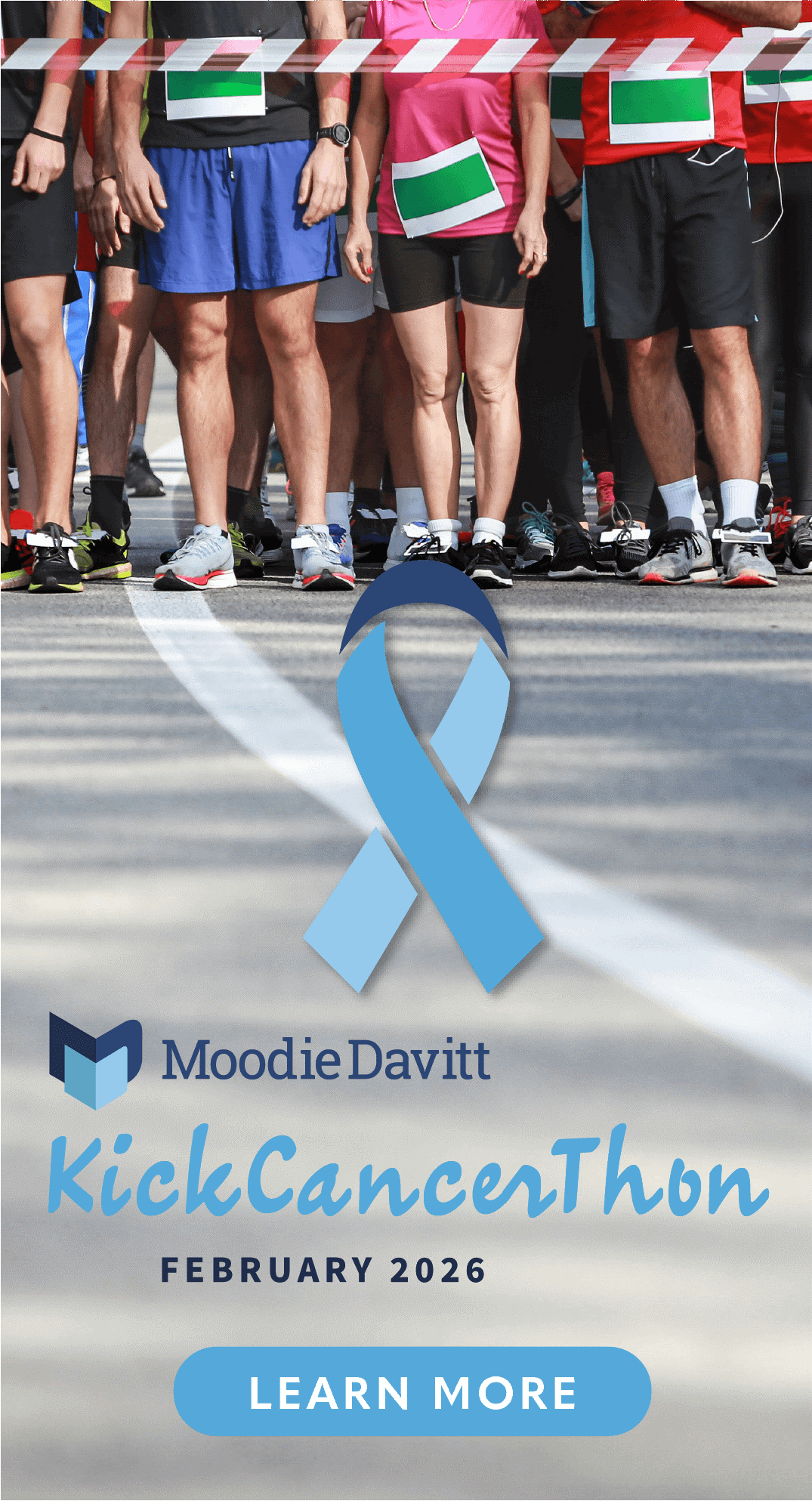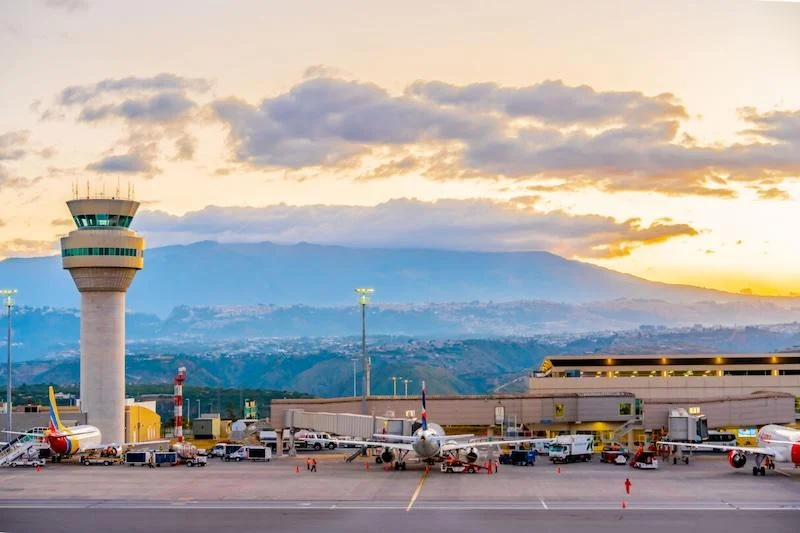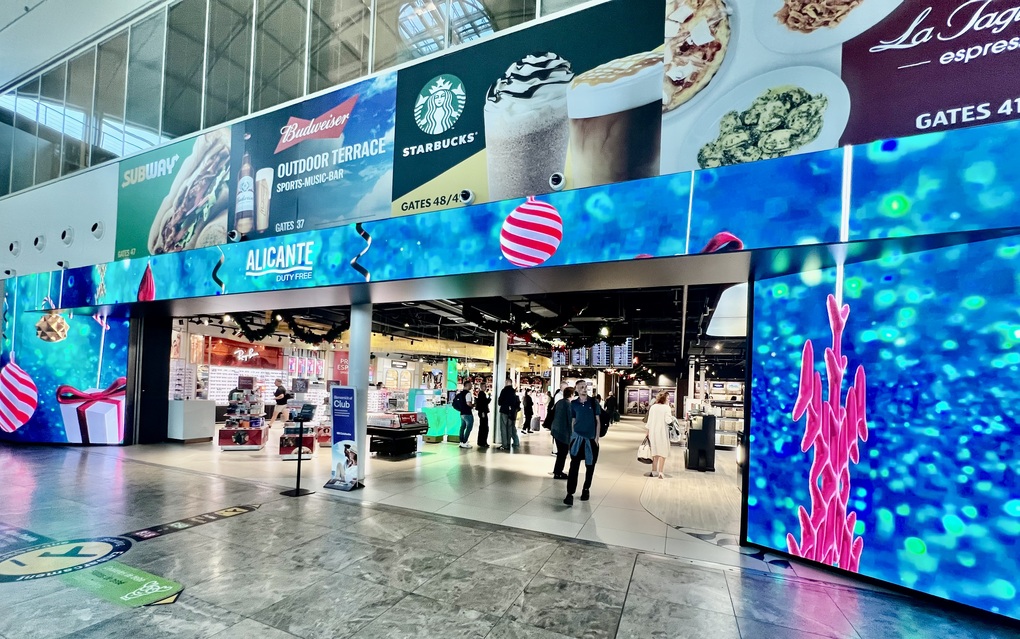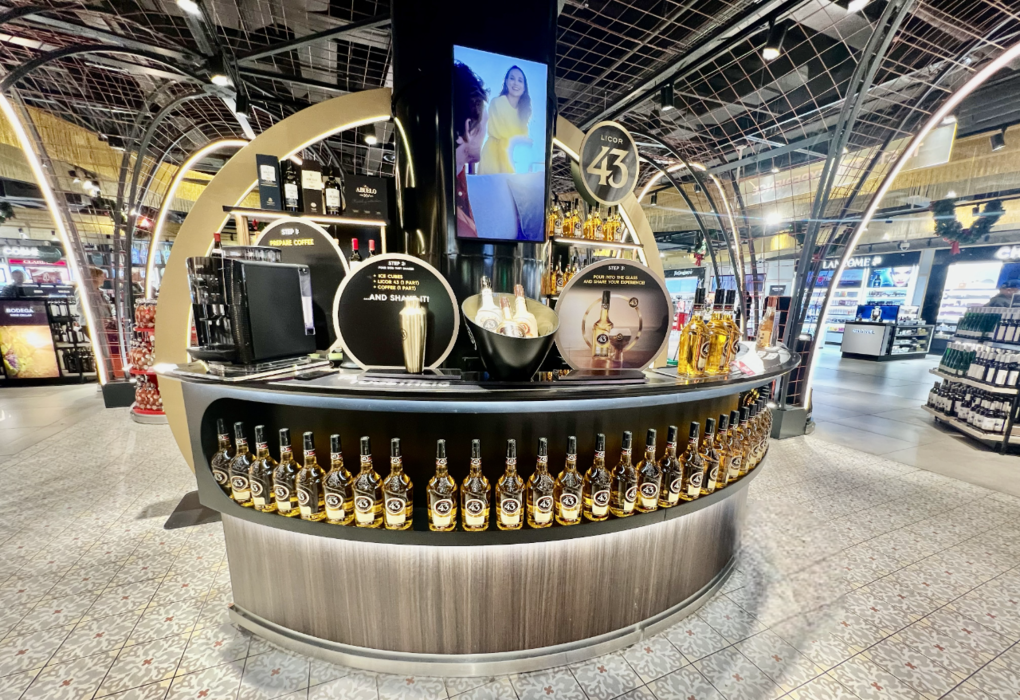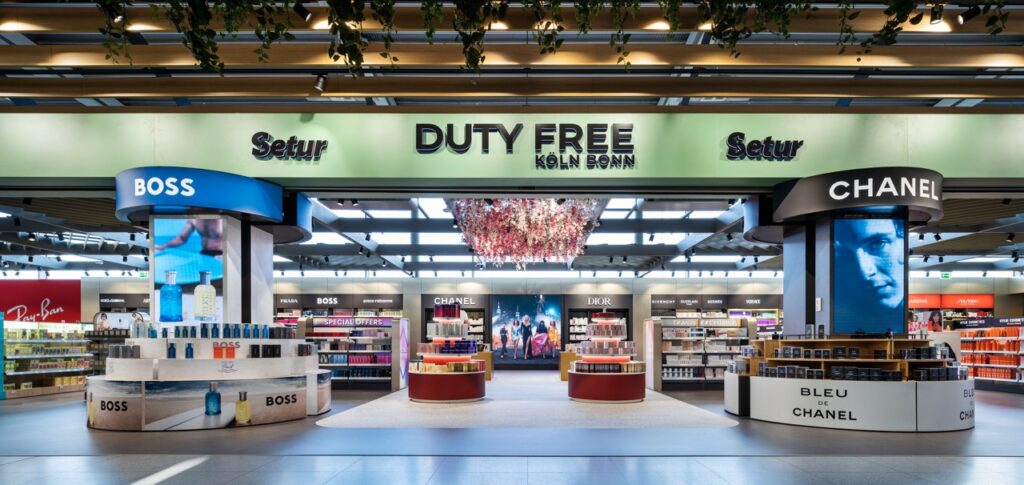
GERMANY. Umdasch The Store Makers has hailed the recent opening of Setur Duty Free’s retail spaces at Cologne/Bonn Airport, which feature a strong emphasis on regionality, openness and easy access and sustainability. Umdasch was responsible for shopfitting and general contracting.
Umdasch Shop Consult Director Maik Drewitz said: “In this project Umdasch acted as a holistic one-stop shop – from the concept to shopfitting to general contracting – our duty free team accompanied this project from A to Z and did an excellent job.” He saluted the completion of the project despite the short conversion time and need to work in the middle of the airside area.
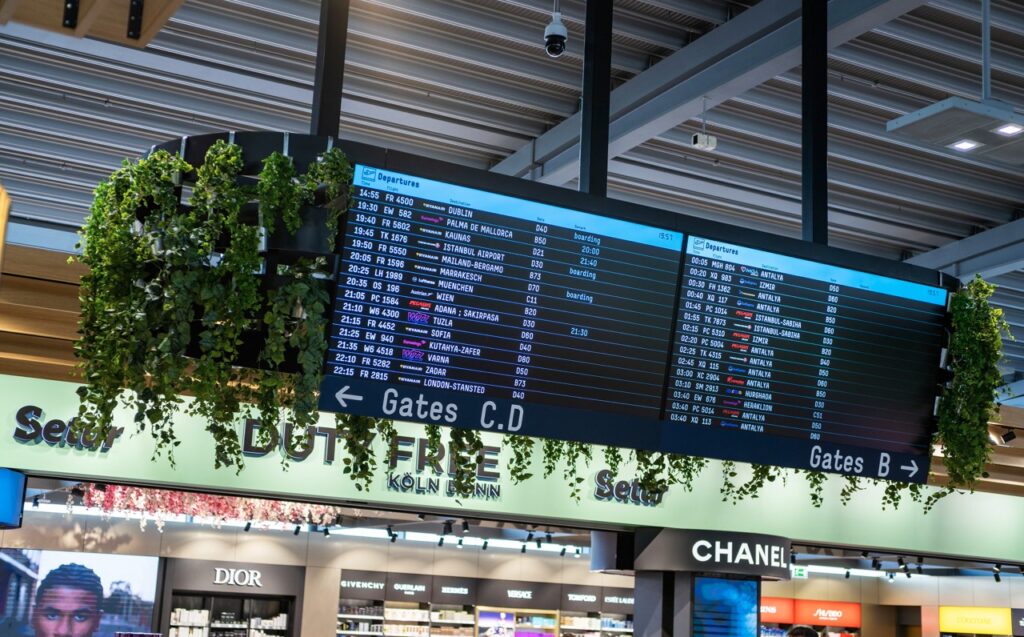
As reported, for Setur, part of the Koç group, Cologne/Bonn Airport is the first airport location in Western Europe. Setur CEO Ahmet Sonmez said: “With this investment in Europe, we are initiating the globalisation step of our growth strategy. In the coming years, we want to expand the potential of Cologne/Bonn Airport and create value for all stakeholders with our customer-oriented service philosophy.”
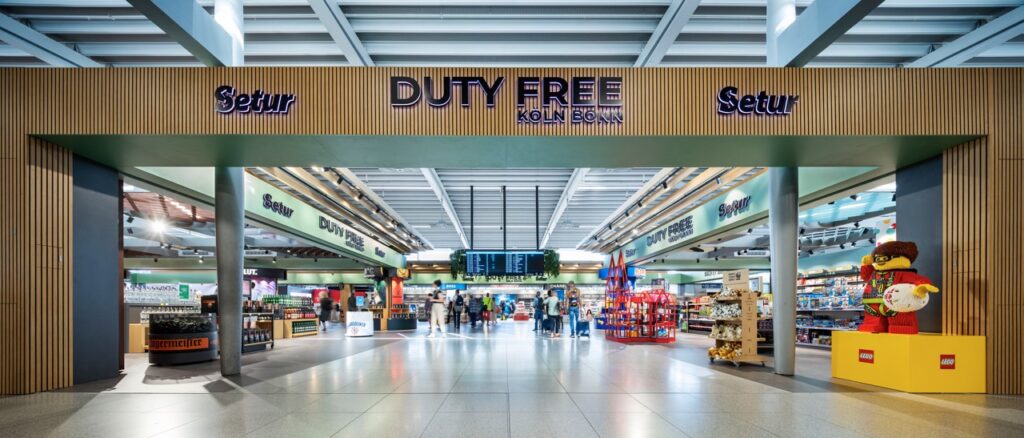


Terminal 1 is visually reminiscent of a market hall, noted Umdasch. The 900sq m space consists of three areas. These are connected by a generous promenade and a pergola that reinforces the impression of open access. As a central element and eye-catching feature, a green display with all flight information is presented in the middle of the store.
The ceiling element is part of the staging and allows the boundaries between airport and retail to merge. Another important point, said Umdasch, was the flexible furnishing, which allows quick and easy changeover of product images. For this purpose, furniture on castors is used in some cases; this can moved out during the day and then pushed back into the store after closing time. This makes it possible to use the space as it is needed.
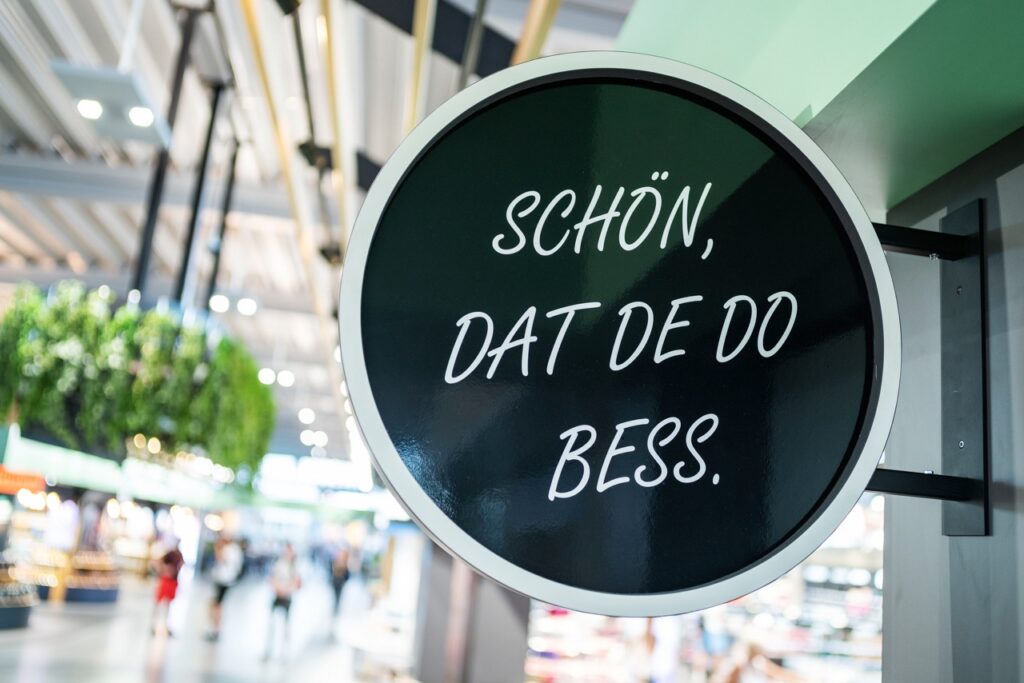
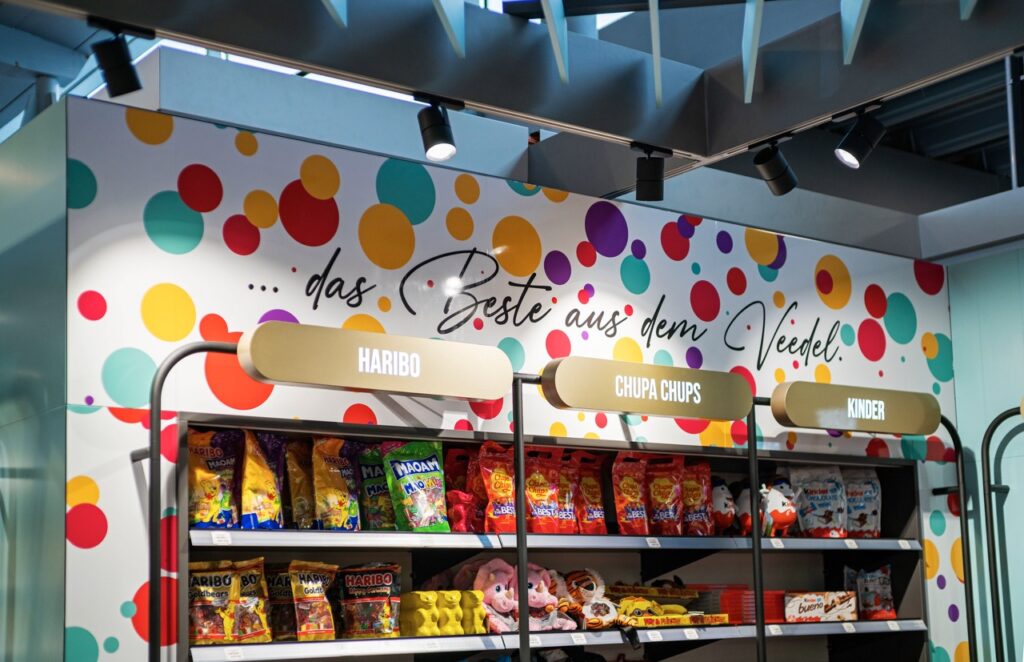
Promotion points along the aisle attract passengers’ attention and draw them into the retail areas. Numerous digital themes will be found in the new terminal in the future, including click & collect stations and self-checkout counters.
The design of Terminal 2 creates a marketplace atmosphere in the almost 600sq m area. The shopfitter said: “The open design with numerous seating areas creates a high quality of stay that contributes to slowing down. At the same time, the concept optimally bridges the gap between the gastronomy offer, the shopping experience and the waiting time until departure”.
In autumn, the airport will add a green wall and a large LED wall for individual display to the retail area. Here, too, the furniture can be used flexibly, with for example a rolling tasting bar in the spirits department. A 50sq m event area is also planned within the retail space. The horizontal textile shutters for night-time closing are also a novelty. The lockable security system is pulled out of the furniture after closing time and closes off the sales area, eliminating the need for disruptive façade elements.
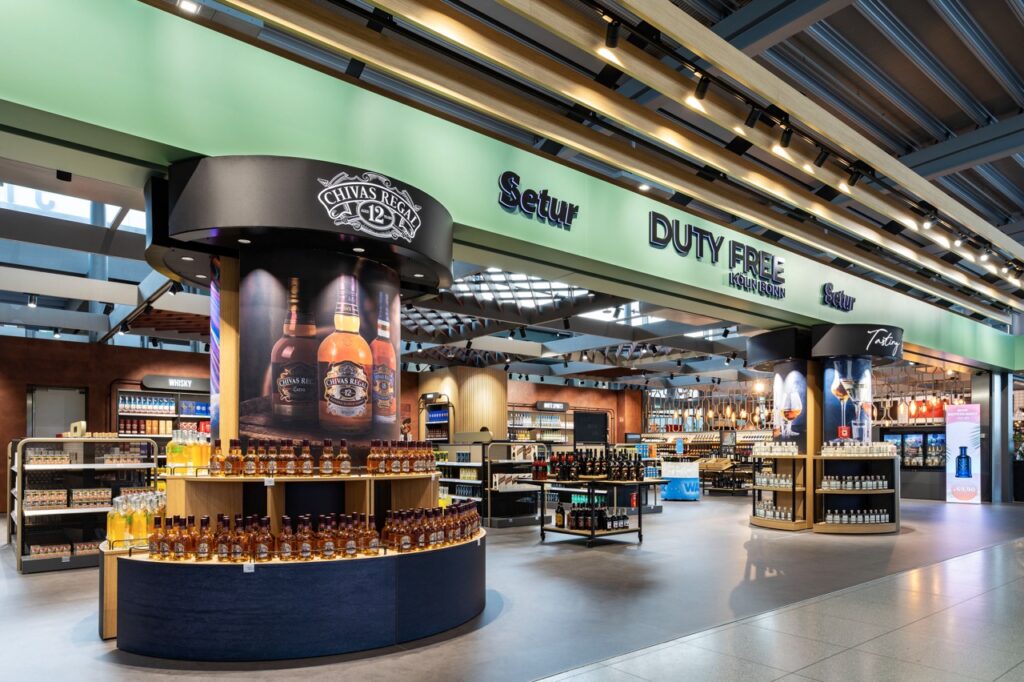
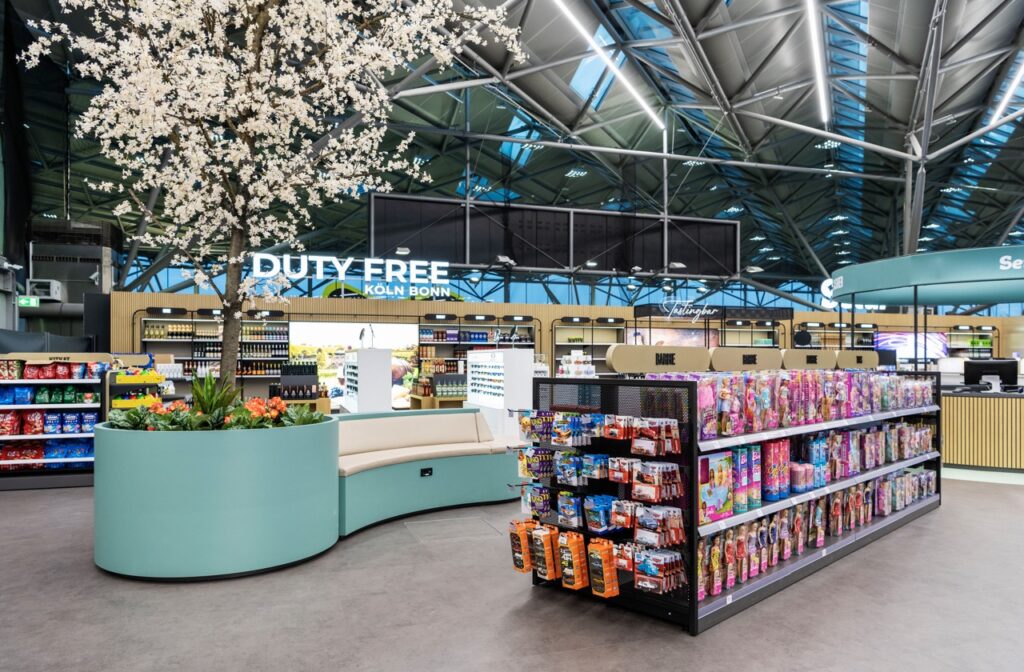
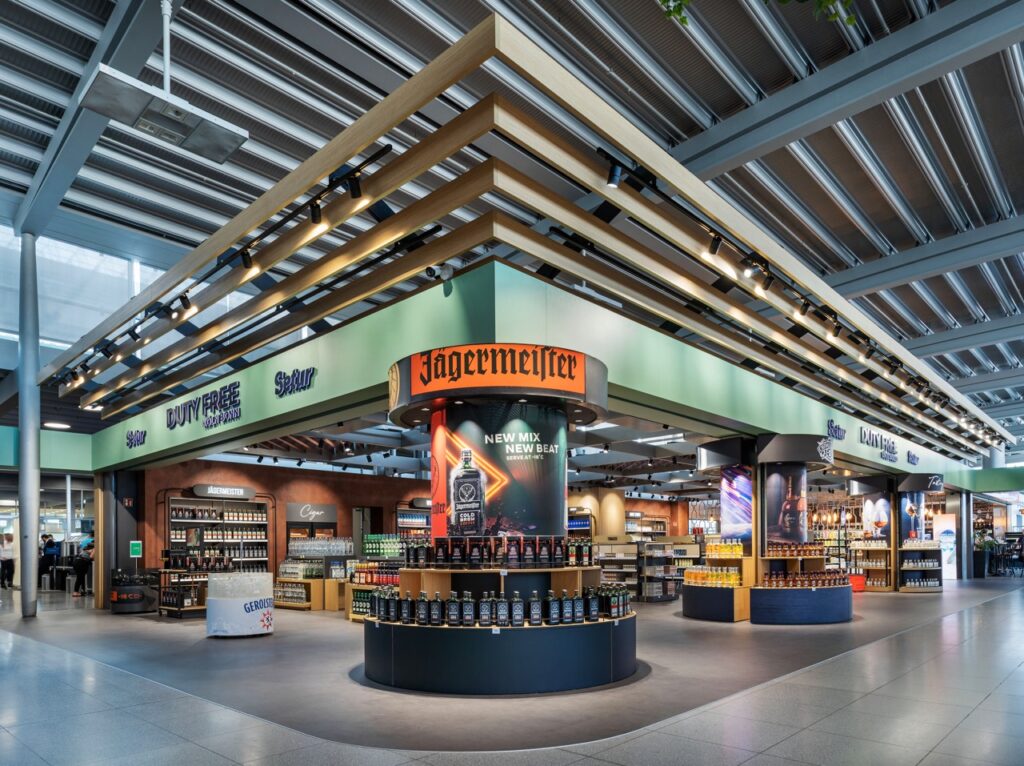
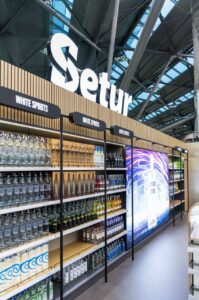 An essential element of the concept development was to make the regionality of the location tangible, with integration of both traditional Cologne and Bonn elements. The ‘Cologne bridge green’ – the colour of the Cologne Rhine bridges – was taken up in the concept as the basic colour for the façade design.
An essential element of the concept development was to make the regionality of the location tangible, with integration of both traditional Cologne and Bonn elements. The ‘Cologne bridge green’ – the colour of the Cologne Rhine bridges – was taken up in the concept as the basic colour for the façade design.
In addition, pink blossoms suspended from the ceiling are presented as a reference to the annual cherry blossom in Bonn’s old town. In addition to the famous composer Beethoven, whose birthplace is Bonn, the Cologne Carnival and the Cologne dialect are also thematised in the design.
The shopfitter said: “In this way, the mentality of the Rhineland is ideally made tangible at the airport. In addition, Setur focuses on regional products, but at the same time offers a wide variety of brands. This creates a modern mix of local and international assortments.”
The topic of sustainability was also a key theme in the development of the concept. It is not only reflected in the materials used or the variable furniture in terms of eco-design, but also concerns local planning, furniture production in Europe, the use of a local craftsmen’s network and much more.
The flooring used is low-emission and the chipboards were made entirely from waste wood material. Umdasch said it made the best possible use of the existing building fabric and to use as little new material as possible. Therefore, the archways and frames were taken over and clad, the ceiling frame remained unchanged. ✈







